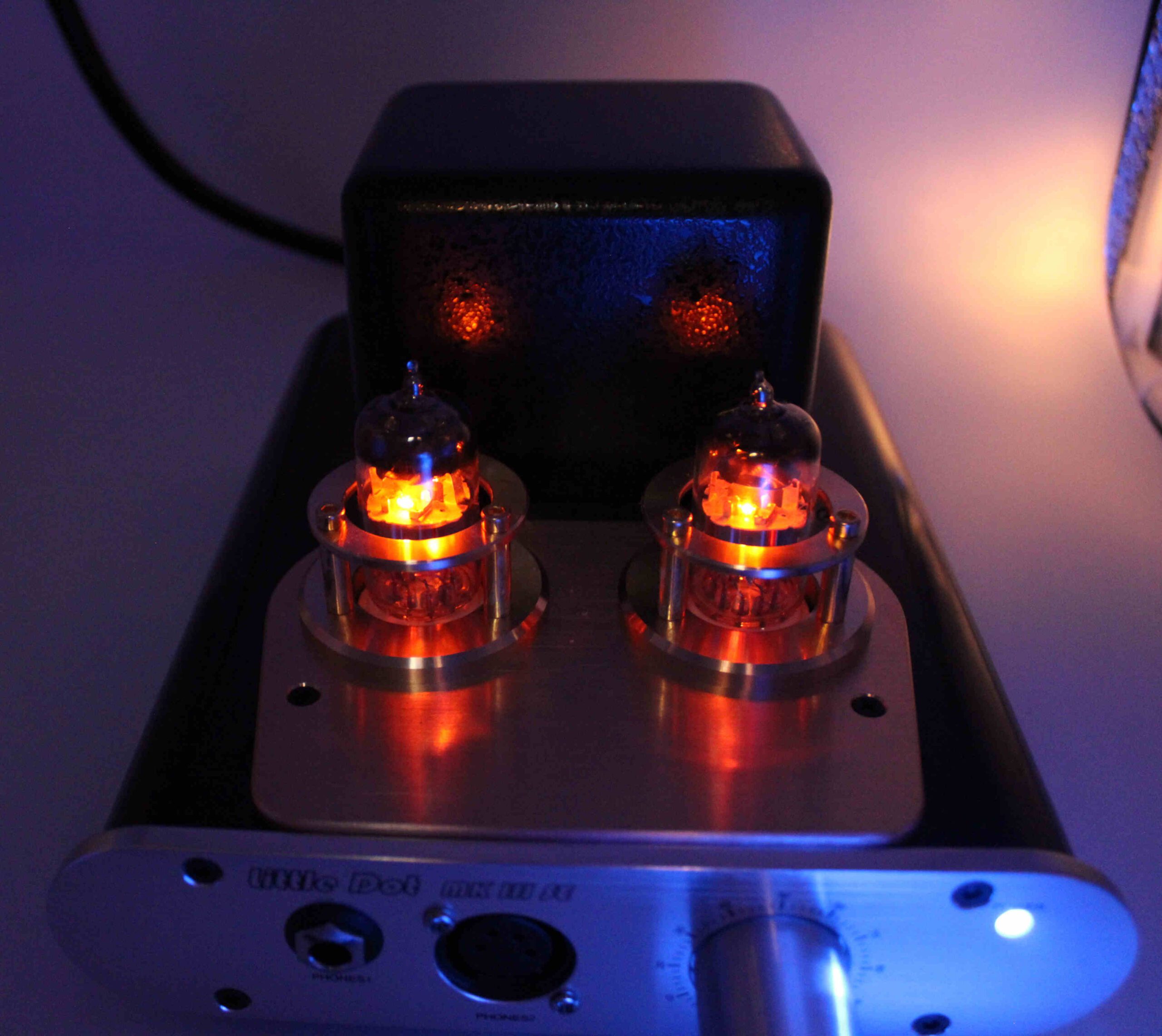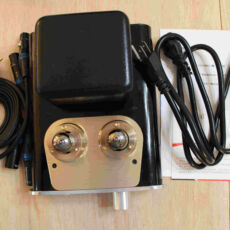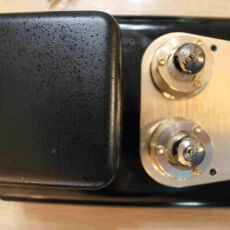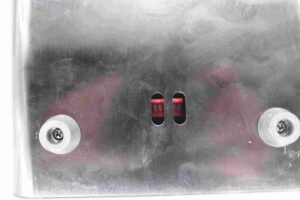
disclaimer: The Mk3Se was provided by Little Dot USA for the purpose of review. The good folks at Little Dot USA were fans of my tube rolling articles and had noticed a comment I had made about the lack of balanced options in the budget tube amplifier segment of the market. They thought the Mk3Se fit the bill and that I should give it a shot. With the Mk3Se using the 6922 series of tubes, which is A.) one of the most popular tubes for pre-amps and small amplifiers and B.) a tube I had a good stock of but have not written a tube rolling article on yet, I couldn’t resist. What follows here is the review of the Mk3se itself. The tube rolling article is still a work in progress as I picked out no less than 24 tube varieties to try. I’ll add a link to the end of this review when the tube rolling article becomes available. If you have an interest in Little Dot or the MK3se, check out their new US based website. I have no financial interest in Little Dot, nor did I receive any compensation beyond the product itself for reviewing it.
Unboxing / Packaging:
The MK3Se is a large unit so is packaged accordingly and the box is much more designed for transport/travel than for retail sales. Typical Cardboard with heavy closed cell foam surround the amp itself while the cables and tubes come packed in a smaller box again with heavy foam surrounds around the tubes. My unit made its journey from China to the US without so much as a scratch on the outer package so I think it was well handled, but I have no doubt that it would have taken fairly substantial abuse to have caused any problems to the internal unit.
Build/Fit:
The Mk3se is a departure from the standard MK3 in that is is a hybrid using a tube pre-amp and a solid state power amp circuit. On the Face we have a 6.3mm Single ended female output, a balanced XLR output, the volume knob, and a blue LED power indicator in the upper right corner. On the top of the amp we have the pre-amp tubes (6DJ8/6922) followed by a housing containing a large toroidal transformer. The rear face has, left to right, RCA inputs (unbalanced), XLR inputs (balanced), the standard IEC C13 male connector, the fuse, and power switch. The model shipped to me is 110V per the label and these do not have an exposed 110/220 switch so be sure to order the correct model for your area. The bottom of the unit has two small cutouts in the baseplate that expose 4 switches used to set the gain. With this being a fully balanced amp, you have one bank per channel with two switches per bank for a total of 4 (more on this later). Tubes have gold plated guards around them that match the top plate and offset the black of the rest of the unit. The unit is solid feeling in hand with good heft. The metal shell is thick enough to have very little flex. The unit gets good and warm in use, but not too hot to touch (other than the tubes themselves) as is common.
Internals:
Confession time, I did attempt to take the Mk3Se down for pictures of the internals but quickly gave up due to the complexity of the installation of parts in the case. there appears to be 4 boards internally. The first is the inputs at the rear left and a power supply board at the rear right. From the front, the main board sits beneath a daughter board that contains the tube sockets. As previously mentioned, the transformer is of the toroidal type and is marked as a 30VA model. With the transformer sitting immediately behind the preamp tubes, the use of a toroidal that lowers the production of magnetic fields around it is wise. Other advantages of toroidal style transformers tend to be lower noise and higher efficiency both of which are advantages in this use case as well.
The Mk3Se uses a true balanced circuit all the way through the amp from the XLR inputs at the rear to the XLR output on the front, although one needs to be aware that use of the RCA inputs will negate this as it requires a fully balanced input. Little Dot points out that the signal path is fully discrete, fully symmetric, and a pure class A design. All of these things they point out are not necessarily true of competing designs as many are class AB and others have a balanced output, but not the fully parallel internal circuitry to support it fully. The single ended inputs and outputs are provided for convenience, but for most who buy the Mk3se, the calling card is the balanced input/output capability so I suspect those may get left off a future generation of product.
Tubes are 6N11 (Chinese designation), 6N23P (Russian designation), E88CC/Ecc88 (Western European designation), or 6DJ8/6922 (US designation). This tube has been in constant production from 1958 through today with models being made in literally every corner of the earth. Price points range from about $10 a tube for common 6DJ8 tubes up to tubes that command several thousand dollars a pair at the top end. Somewhere in between those two extremes there is bound to be a model that fits your needs and budget. I chose 24 different models for my tube rolling experiment and don’t feel like I have scratched the surface of what is available for this amp.
Technical specs are as follows: Input impedance is listed as 10K Ω with an SNR of 95 dB but the impressive numbers are 0.001% distortion (measured at 1kHz at 2V RMS) and a claimed frequency response of 5Hz to 100kHz (1dB). Output power is quite good as welll with 2.5 Watts into 32Ω or 0.8 Watts into a 300Ω load. The unit has 2 gain settings with 2 pairs of switches on the base of the unit. With all 4 switches in the on position (default) the unit is on low gain with a factor of 4.5:1. With all four switches in the off position, the unit is put in high gain mode with a 9:1 gain ratio. Unlike some other models, the one on / one off positions are not discussed or recommended.
Sound:
Sound characteristics are difficult to nail down for most amplifiers and this is particularly true of tube amplifiers where the contribution of the tube itself can change the signature pretty dramatically. For the sake of this analysis, I used only the tubes the Mk3se shipped with, and only after 100 hours of burn in time. Remember that these notes can and will change with different tubes. I’m still working through my 24 tube sampling of available types and brands and hope to have more posted on that by the end of August.
Bass:
The MK3se has plenty of power when called upon and can deliver Bass that is both deep and heavy when needed. While not quite as potent as something like the Ta-30, I didn’t have any issue with driving even the He6 (on high gain) and bass was still well rendered with no loss in impact even with high impedance (600Ω) or low sensitivity headphones. I don’t feel that the Amp does anything to accentuate the low end and overall, bass is linear through the mid bass and even into the lower mids.
Mids:
We expect a tube amp to be well “Tubey” with somewhat warm and syrupy mids. The Mk3se stops short of this with the stock tubes and while it does have a touch of warmth to the mids, it isn’t what I would define as syrupy at all. True mids have good texture and detail and feel just very slightly ahead of the lower mids in the mix. There is a very definite upper mid/ lower treble emphasis (entirely tube as it goes away when swapped). This brings vocals to the front, but can be a bit too much for my ear.
Treble:
The lift present in the upper mids is also seen in the lower treble and here what becomes pronounced is a bit of grain to the treble. Again, this is the tube and not inherent to the amp but with stock 6N11 tubes, expect to have a little unevenness and some grain in the upper ranges that keeps it from sounding completely clean. Extension is good and they do have some air at the top, but tube rolling goes a long way to improve the treble. (Without giving away too much, try the Tesla 6922).
Soundstage/Imaging:
I have always thought the job of a good amplifier is to stay out of the way and let the headphone deliver. I intentionally paired the Mk3Se to the HD800, the Ananda, the He6, and the Beyer T1 all of which are known for their stage dimensions. The HD800 delivered the massive stage they are known for and imaging was spot on as well, The Ananda had a few struggles with the treble of the 6N11 but improved with tube swaps, the He6 did what I know it should, and the T1 did was also. I won’t claim the amp itself has great stage, but it does seem to do all the right things to let headphones that have great stage really shine.
Thoughts / Conclusion:
Fully balanced tube amps are a rarity in the budget space, so when the opportunity arrived to try this one, I jumped at it and I am really glad I did. The Little Dot MK3Se is a big departure from the previous Mk3 as it is hybrid with tube pre-amp and solid state power amp segments. The SE is much more closely related to the MK3+ and the LD H1 and while the shell is pure Mk3+ the internals are more closely related to the H1 with its fully balanced circuitry design. On top of that, the 6922 is one of the most prolific tubes out there so there is little chance of supplies running low anytime soon. Genelex, and Reflector both produce 6922 tubes currently in Russia, and the Shuguang plant in China produces a 6922 as well. Supplies of old stock US and European made tubes are quite good with every possible maker and budget represented. I found some fantastic options at very reasonable price tags in my experimentation. In order to do its best work, the SE does need to be paired with a balanced DAC. With the Grace S-DAC balanced being sold for $150 and the SMSL Su-8v2 for slightly over $200, it doesn’t take all that much to get into a full balanced system these days. For a bit more the Topping D90 is a top performer and still when paired with the SE would keep total spend under $1500 or so. If you don’t have balanced gear, you can still use the SE with the provided RCA inputs. This gives a new user a way to buy an amp today to use with their existing gear, and then grow into it as budget is available. I think the Mk3Se offers a lot for the price tag and as balanced dacs drop from the stratosphere into territory more of us can afford, it only makes sense to make an amp to take full advantage of it. The Mk3Se does, you should try one out if you get the chance, its a great little amp.
Pros: Power to spare, very good dac performance, clean sound, tube rolling options abound.
Cons: requires balanced source to offer best output, requires tube rolling to find best balance.








Post a Comment